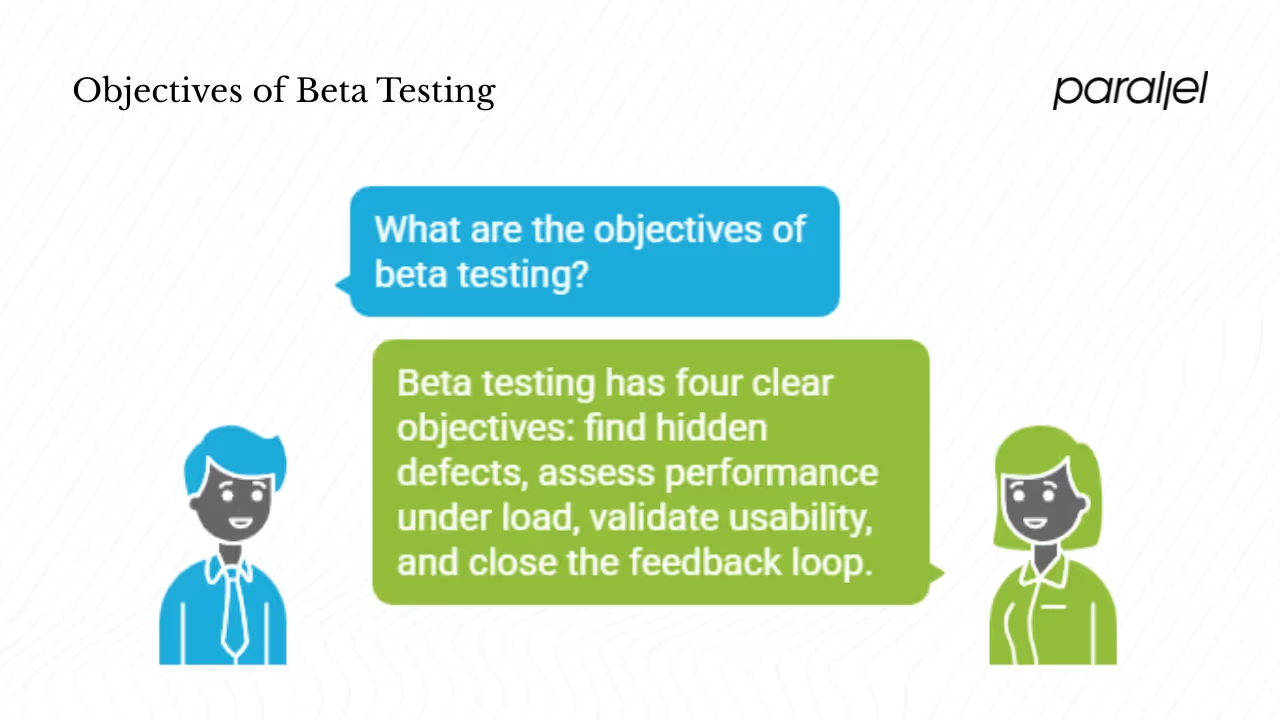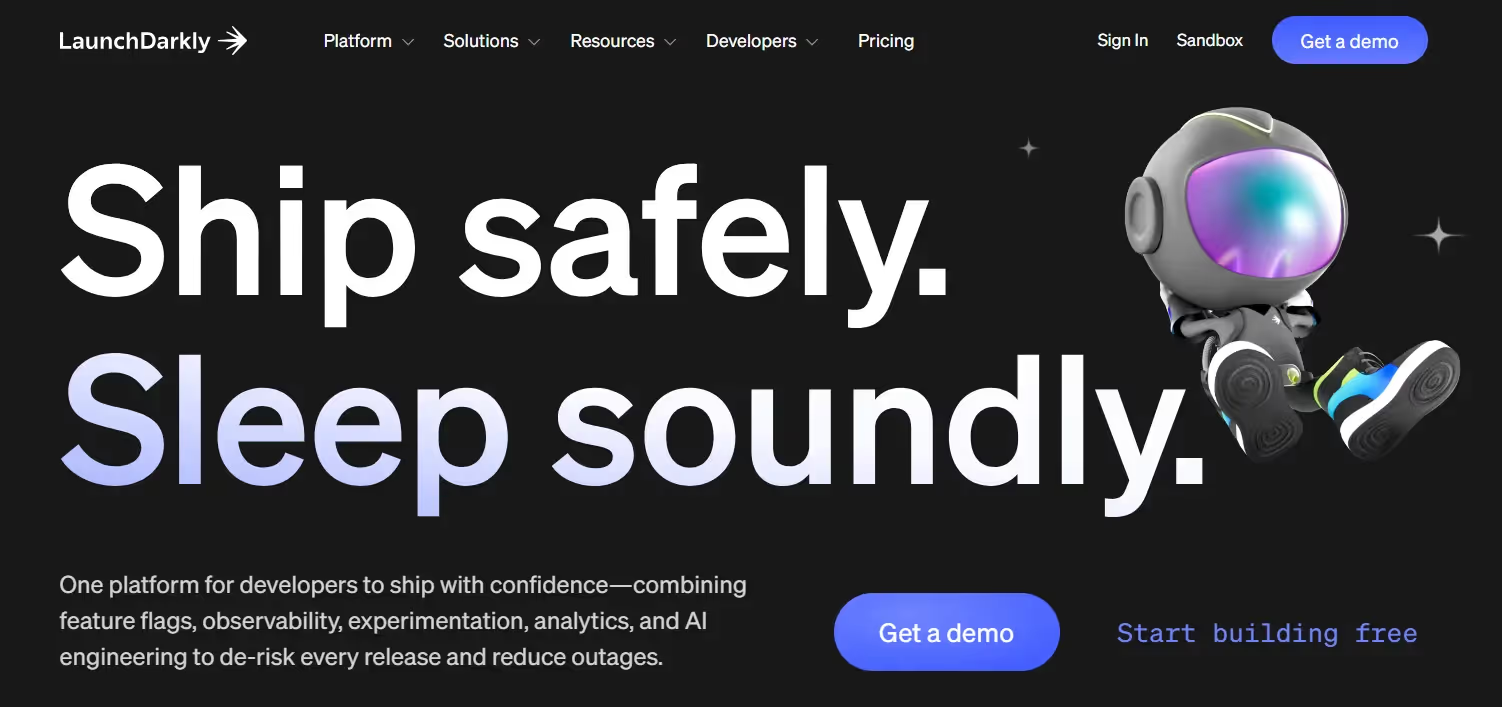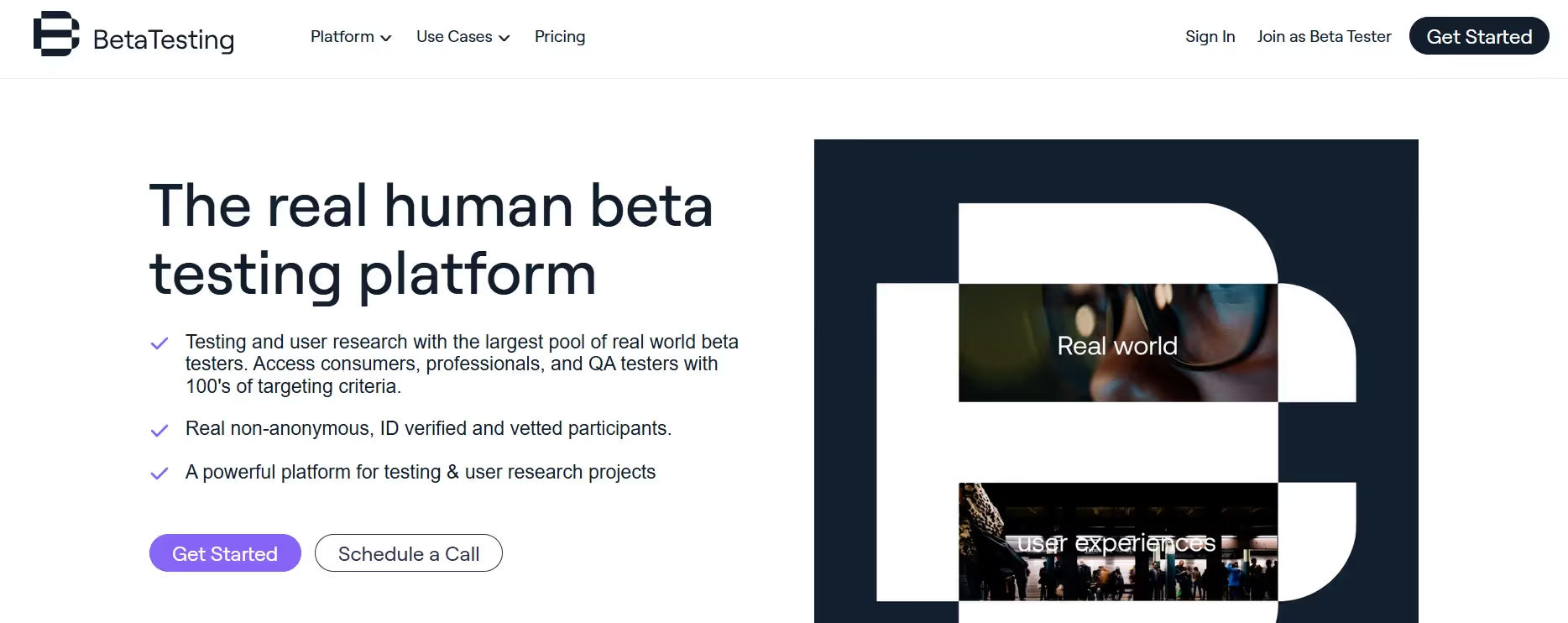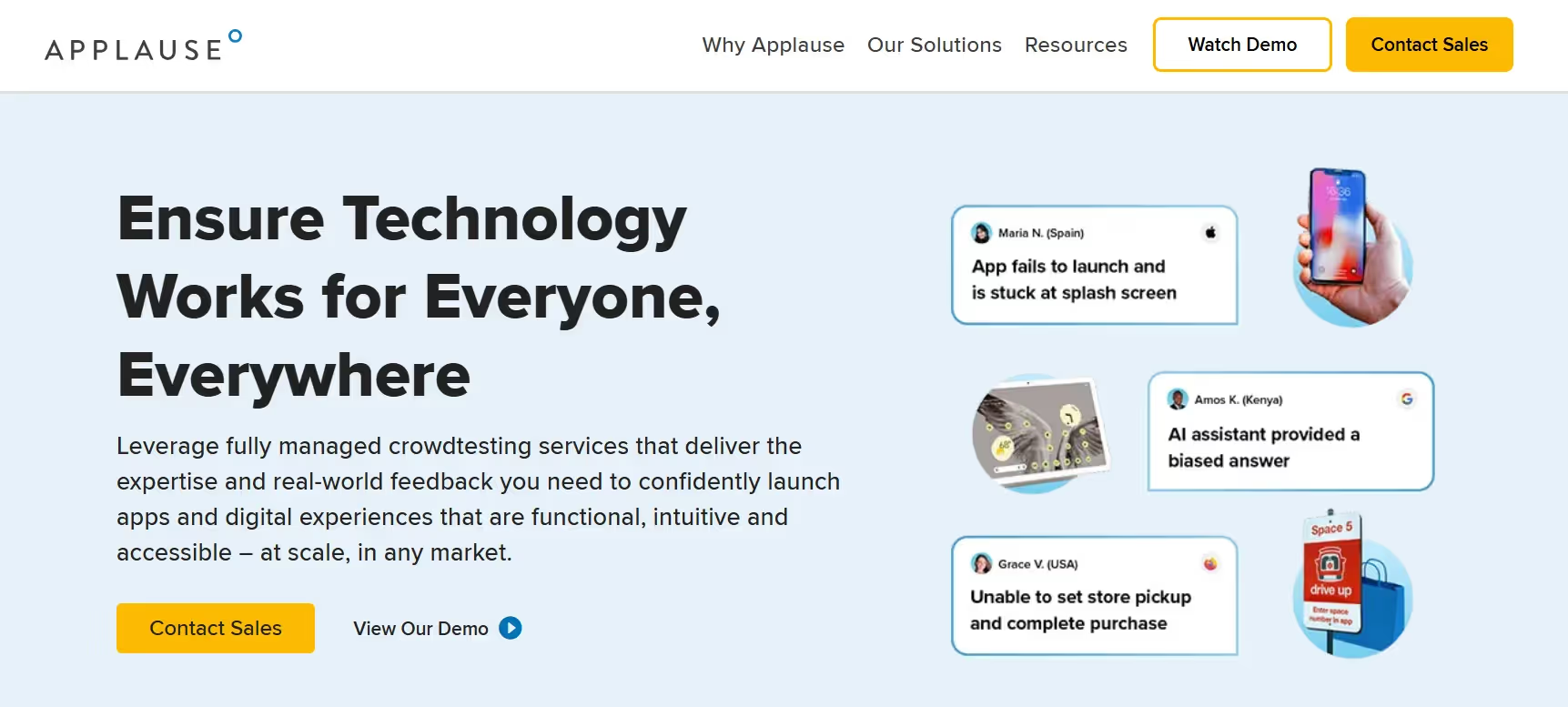What Is Beta Testing? Complete Guide (2026)
Understand beta testing, its purpose, and how collecting user feedback improves product stability and user satisfaction before release.

In the earliest days of a product, every new release is a test of trust. When founders, product managers and design leads ask what is beta testing and why it matters, the answer isn’t academic. Beta testing is the practice of giving a near‑finished product to real users in their own context to uncover hidden problems and gauge usability before a wider release. ProductPlan defines it as a final round where “real users use a product in a production environment to uncover any bugs or issues”. GeeksforGeeks adds that beta testers run the software “in a real‑world environment” and report bugs or usability problems. In other words, it’s how you validate that your work actually works when it’s no longer under your roof.
Where Does Beta Fit in the Release Lifecycle?
Software isn’t born fully formed. It moves through stages: pre‑alpha, alpha, beta, release candidate and general availability. Pre‑alpha covers planning, design and early coding. The alpha phase is the first formal testing; Wikipedia describes it as internal white‑and-black‑box testing to catch major defects. Once the core features are built and no new ones will be added — what engineers call “feature complete” — the project enters the beta phase. This is where outside users come in. Beta testers see a product that will likely still have bugs or performance issues, and their goal is to reduce negative impacts and inform usability. After one or more beta cycles, the team might cut a release candidate: a build with the potential to be final if no show‑stopping defects appear. Then comes the stable release and eventually general availability.

Understanding where beta sits matters because it’s the bridge between internal confidence and external trust. A release candidate without a preceding beta risks shipping untested assumptions. A beta without an earlier alpha leaves testers dealing with fundamental instability. Early‑stage teams often rush through these stages, but it pays to respect them. In my experience working with AI/SaaS startups, skipping beta leads to support tickets and reputational damage; a measured beta saves on emergency fixes later.
What Are the Objectives of Beta Testing?
Beta testing isn’t just bug hunting. It has four clear objectives:
- Find hidden defects – Real users will stress your product in ways your team can’t simulate. GeeksforGeeks notes that beta testing “identifies and fixes bugs or errors” before launch. Issues that never surfaced in a controlled lab appear under varied hardware, network conditions and usage patterns.
- Assess performance under load – ProductPlan points out that beta testing is the first chance to test in a production environment. You learn whether servers scale, pages load quickly and data syncs reliably when multiple users are active.
- Validate usability – Observing how people navigate flows reveals confusing labels, dead ends or missing context. ProductPlan says beta is an opportunity to confirm how users “interact with the product as expected or discover unexpected usage patterns”. That insight helps you refine onboarding, documentation and prompts.
- Close the feedback loop – Feedback from testers informs messaging and feature prioritization. Beta testing “refines positioning, marketing and communication” and validates hypotheses about which tasks matter most. An exclusive beta can even build buzz among early adopters.

Taken together, these objectives answer the practical question of what is beta testing for startup teams: it is a live rehearsal where you catch errors, measure performance, understand usage and align the product story with reality.
What Types of Beta Testing Exist?
Beta is not one size fits all. ProductPlan distinguishes between closed and open betas. A closed beta limits access to specific customers, early adopters or paid testers; it suits sensitive features or products needing curated feedback. An open beta welcomes anyone and often serves both as a test and a way to generate interest. Wikipedia echoes this distinction, noting that open beta releases can surface “obscure errors that a much smaller testing team might not find”.
There’s also the idea of a perpetual beta, in which a product remains officially in beta for long periods while new features are continuously added. Gmail and other cloud services popularized this approach in the 2000s, using a persistent beta label to signal that things are always improving. While this fits agile SaaS models, it can confuse customers about stability. In my work, I reserve perpetual beta for internal tooling or research projects; customer‑facing products deserve a clear milestone to signal readiness.
Beyond those categories, different industries adapt beta formats. For physical products or hardware‑integrated apps, teams sometimes run traditional beta tests with controlled cohorts over weeks or months. Post‑release betas gather data after initial launch to inform future updates. The key is matching the beta style to the risk profile and learning goals.
How Does Beta Testing Differ from Alpha Testing?
Alpha and beta serve different purposes. Alpha tests happen inside the organization to catch core functionality issues. ProductPlan states that alpha tests are performed by “internal employees in a lab or stage environment” and aim to remove obvious defects before public exposure. GeeksforGeeks stresses that alpha comes before beta and is often conducted in a controlled environment.
Beta tests, by contrast, involve external users in real settings. GeeksforGeeks notes that beta is “performed by clients or users who are not employees” and happens at the user’s location without specialized labs. The goal shifts from internal validation to real‑world feedback. Put simply: alpha asks “does it work as built?” while beta asks “does it work for our users?”
The table below summarizes the distinctions without long sentences:
These differences matter when you answer what is beta testing in practice. Beta requires processes for recruiting users, collecting feedback and triaging reports. Alpha demands rigorous internal quality controls. Each complements the other.
Why Should Founders, PMs, and Design Leaders Care About Beta Testing?
At Parallel we often advise early‑stage teams that beta testing is more than a checklist item. It’s a low‑cost way to validate products–market fit. Inviting selected customers into a closed beta creates a sense of access and urgency. ProductPlan notes that exclusive invitations can build buzz and anticipation. That buzz translates into early sign‑ups and a group of engaged advocates who feel invested in your success.
Beta also surfaces behavioural insights that drive prioritization. Watching how users actually complete tasks exposes friction points that cannot be predicted in design reviews. ProductPlan suggests using analytics during beta to confirm that users interact with the product as expected and to adjust onboarding and help content accordingly. In our projects with AI tools, we’ve found that rewriting onboarding copy after observing testers reduced time to first value by 30%.
Pragmatically, beta saves money. A DesignRush report updated in March 2025 highlights that fixing a bug during implementation costs six times more than catching it in the design stage. If an issue makes it to testing, the cost rises to fifteen times higher; once software is in production, fixing errors can be 100 times more expensive. Investing in a thorough beta reduces those expensive late fixes.
Finally, beta is your last chance to tune desirability. Beta testers often volunteer or receive small incentives, such as discounts or early access. Their qualitative feedback helps refine positioning, messaging and documentation. For design teams, that feedback can uncover small interaction issues that are hard to spot internally. In one of our projects, testers helped us realize that a button label confused non‑technical users; changing two words improved completion rates by 15%.
What Are Some Real-World Case Examples and Tools for Beta Testing?
Several real‑world programs illustrate how beta testing works.
1. LaunchDarkly: Feature Flags for Controlled Rollouts

LaunchDarkly, a feature-flag platform, promotes using toggles to run betas. Their approach tackles challenges of traditional betas, such as coordinating opt-ins, organizing focus groups, and supporting granular rollouts.
With feature flags, teams can release features to subsets of users, collect incremental feedback, and refine before a full launch. This makes the process more flexible and data-driven.
2. BetaTesting.com: Managed Recruitment and Feedback

BetaTesting.com provides a managed service for teams that need targeted testers. Their platform lets you recruit users from specific demographics, design test tasks and surveys, and gather structured feedback over days or weeks.
This is especially useful for consumer apps, where teams may need rapid access to testers across geographies or devices without building their own panel.
3. Applause: Large-Scale Crowdtesting

Applause describes beta testing as a pre-release acceptance test that validates functionality, usability, reliability, and compatibility. Common challenges include:
- Recruiting enough testers across platforms
- Ensuring high-quality feedback
- Controlling costs
- Managing logistics
Their crowdtesting service solves these issues by tapping into a global pool of over one million testers. This scale helps companies test in specific markets and handle localization challenges.
Large technology companies also run public betas. Apple’s Beta Software Program invites users to enroll devices and “test pre‑release versions” of iOS, macOS and other operating systems, then provide feedback through the Feedback Assistant app. Google’s Android Beta Program allows Pixel owners to try upcoming Android releases and states that feedback helps them “identify and fix issues”. These programs show that beta is not just for startups; even giants rely on external testers to harden software.
When structured well, a beta can turn testers into advocates. However, the same Applause article cautions that poor planning can lead to noise and low ROI. Tools like BetaTesting.com or feature flagging systems help teams manage invitations, collect feedback and control exposure. The right choice depends on your resources and the sensitivity of the product.
Conclusion
Beta testing is the moment when you answer “does it really work for our users?” It sits after the product is feature complete and before a release candidate. By inviting real users into a controlled release, you identify hidden defects, measure performance, observe usability and gather feedback for refinement. The cost of skipping this step can be huge — fixing problems in production is orders of magnitude more expensive. Early‑stage founders, product managers and design leaders should view beta as both a safety net and a growth lever. Plan your beta with clear objectives, recruit testers who match your target audience, set up mechanisms to collect and act on feedback, and define what success looks like. A thoughtful beta makes the difference between a launch that flops and a product that delights.
Frequently asked questions
1) How much do beta testers get paid?
Beta testers are often volunteers. Wikipedia notes that they “tend to volunteer their services free of charge” but may receive discounts or early versions. Some companies offer stipends, gift cards or access to paid tools, especially when the testing is time‑consuming or requires specific expertise. Platforms like BetaTesting.com manage paid programs for enterprises.
2) What is an example of a beta test?
A simple example is a mobile app inviting 200 early users to try a new feature before rolling it out. These users receive a link, complete tasks and report any issues. Public programs like Apple’s Beta Software Program allow anyone to test pre‑release versions of iOS and provide feedback. Google’s Android Beta Program similarly lets Pixel owners try upcoming Android builds and share issues. In both cases, the companies use feedback to fine-tune the release.
3) What is the difference between alpha and beta testing?
Alpha testing happens internally, often in a lab, and focuses on catching fundamental functional issues. Beta testing involves external users in real environments to surface bugs, assess performance and gather feedback. Beta follows alpha and serves as the final validation before general release.
4) What is beta testing in healthcare?
In healthcare, beta testing must respect regulatory and patient‑safety constraints. Software is often tested with clinicians or pilot groups in controlled clinical settings. The goals are similar — validating functionality, reliability and usability in real workflows — but the stakes are higher. Beta tests may involve HIPAA‑compliant environments, anonymized data and oversight by regulatory bodies. Feedback focuses on safety, accuracy and adherence to standards rather than only user delight. Because of these constraints, healthcare betas are usually smaller, longer and accompanied by rigorous compliance reviews.









.avif)



